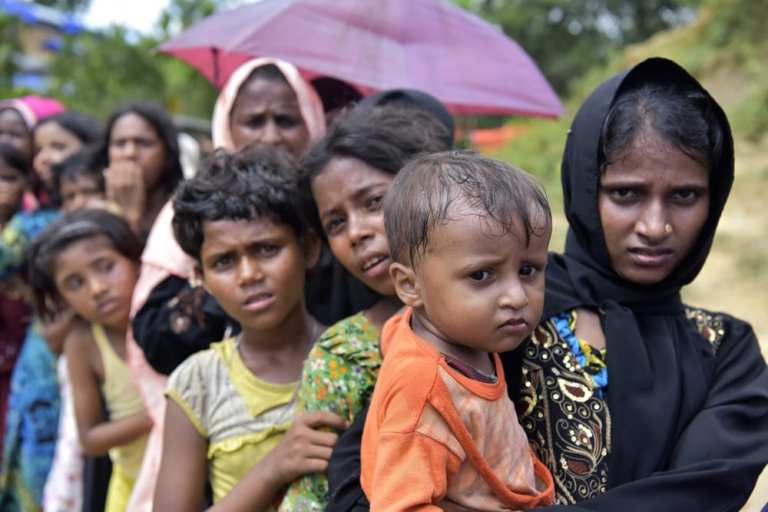
Natural disasters, war and other emergencies can force people to evacuate their communities and flee their homes. Individuals rushing to escape danger may not have the time or presence of mind to grab birth certificates, Social Security cards and driver’s licenses, yet they may face serious problems restarting their lives without identification. These difficulties also affect many individuals from regions where official proofs of identity are never issued the first place. The World Bank estimated that one billion people lacked formal identity documents as of 2018.
Missing identifying credentials is a major obstacle for displaced persons seeking aid or a fresh start in a new region or country. Financial Institutions (FIs) may not be able to complete the know your customer (KYC) checks required to onboard new customers, and the inability to access formal banking services can impede refugees’ financial efforts to receive aid, safely save money and more. Complications around identification can also create opportunities for fraudsters to abuse emergency aid efforts and pose as genuine victims. Scammers can then steal funds or goods intended to help those in need. Chaotic or weak identification practices can also result in authorities mistakenly denying shelter, food and other support to displaced parties that officials confuse for fraudsters. This month’s Deep Dive examines the challenges and efforts connected to establishing identities for those fleeing dire situations without formal credentials.
Biometrics And Blockchain
Individuals may not have time to grab anything before fleeing disaster, but one thing they can never be without is their body. Such thinking inspires efforts to use biometric information for identity confirmation. Uganda has been working with the United Nations High Commissioner for Refugees (UNHCR) and the World Food Programme to develop a biometric method for identifying many of the refugees entering the country to escape violence in the Democratic Republic of the Congo, for example. The project aims to scan individuals’ retinas and fingerprints and start recording credentials for them. The effort had verified 1.1 million people by November 2018, and the collected data was used to help bring aid to the appropriate recipients, support program planning by gaining improved insights into refugees’ needs and thwart attempted fraud. The UNHCR conducted similar efforts to biometrically register Rohingya refugees in Bangladesh in 2018 and 2019. The agency, in collaboration with the Bangladeshi government, provided refugees with ID cards bearing their photos as well as personal details such as date of birth, location of birth and name.
Other initiatives combine biometric identification directly with financial services. The UNHCR collaborated in 2019 with an Iraqi mobile wallet company and a biometric technology provider on an effort encouraging monetary aid to reach intended recipients. The UNHCR distributed financial aid to about 30,000 Iraqis last year and delivered about $60 million via partner organizations in 2018. Refugees who are authenticated via iris scans on their phones will now be able to receive funds into mobile wallets that can complete electronic bill pay as well as fund transfers and disbursements. The iris scanning reportedly authenticates identities within 3 seconds — a vast improvement over what could otherwise take 15 days from registration to cash assistance.
Aid organization-provided biometric IDs can help individuals receive support while staying in refugee camps, but they do not always help once vulnerable parties have resettled. Humanitarian groups may not be prepared to easily share such information with each other, which can challenge individuals that move into new care. Some organizations suggest that blockchain-based platforms could securely store records of refugees’ identities. Qualifying organizations — such as governments’ border checkpoints and relevant humanitarian aid organizations — could receive permission under such a scheme to view identity records on the blockchain, ensuring that details can continue to be accessed even as individuals move to new locations and interact with new groups. Different levels of permissions could be granted based on how much information organizations actually need, preserving privacy.
Mobile Data
Biometrics and blockchain are not the only tools that can help verify those lacking the proper identifying documentation. Mobile network operators (MNOs) also have strong roles to play, especially in developing regions where many who do not have ID documents still have smartphones, and in locations where residents may have hastily escaped disasters and fled with phones in their pockets as opposed to collecting passports or other identification documents.
MNOs typically have large amounts of data about their customers because many use their networks for eCommerce, web browsing and more. It is estimated that nearly 80 percent of smartphone users in the Asia-Pacific, Europe and North America use the internet on their phones, generating many activity patterns that MNOs can analyze to develop unique profiles. Smartphones also provide geolocation tracking that can suggest that the individuals holding the phones at that very moment are likely to be the devices’ typical users. Such data can serve as a helpful identity-establishing tool, especially when these details are combined with those from other sources.
Environmental crises, political instability and violence are always going to be possible, and such disasters will displace people. Affected individuals will need to quickly access funds and financial services to get their lives back in order, and organizations seeking to help will need assurance they can assist as many needy people as possible while stopping fraudsters from stealing aid funds. Disasters may always be a fact of life, but with the right identification supports, survivors will be able to quickly get on their feet again.